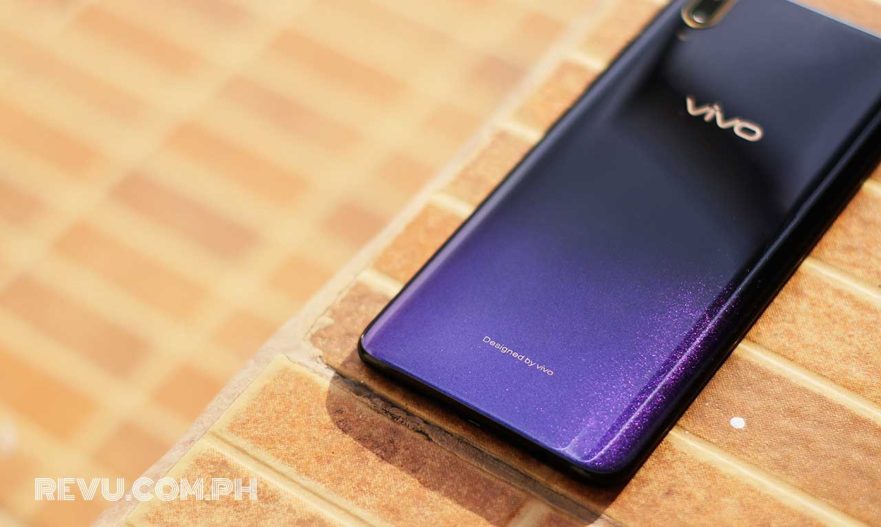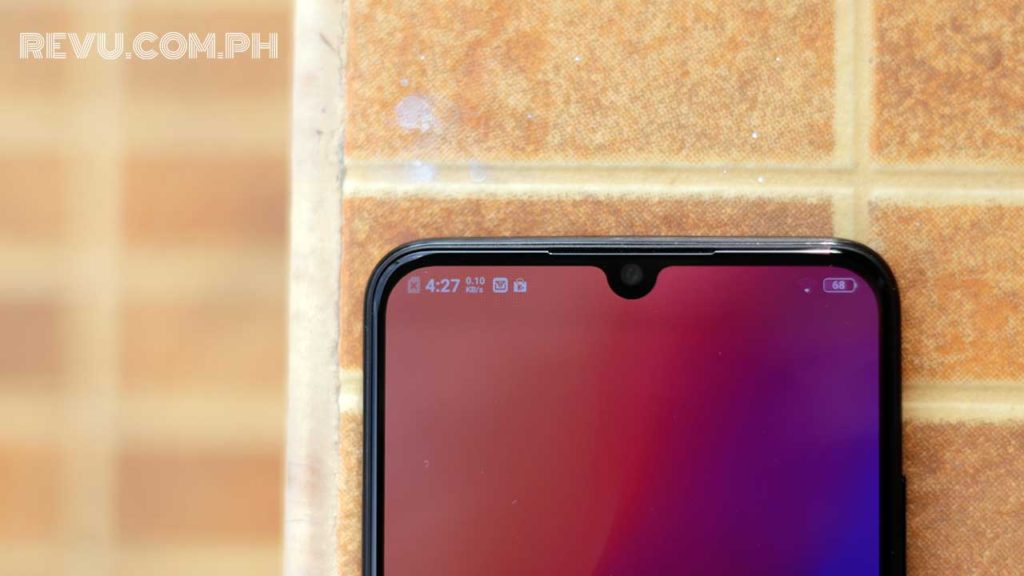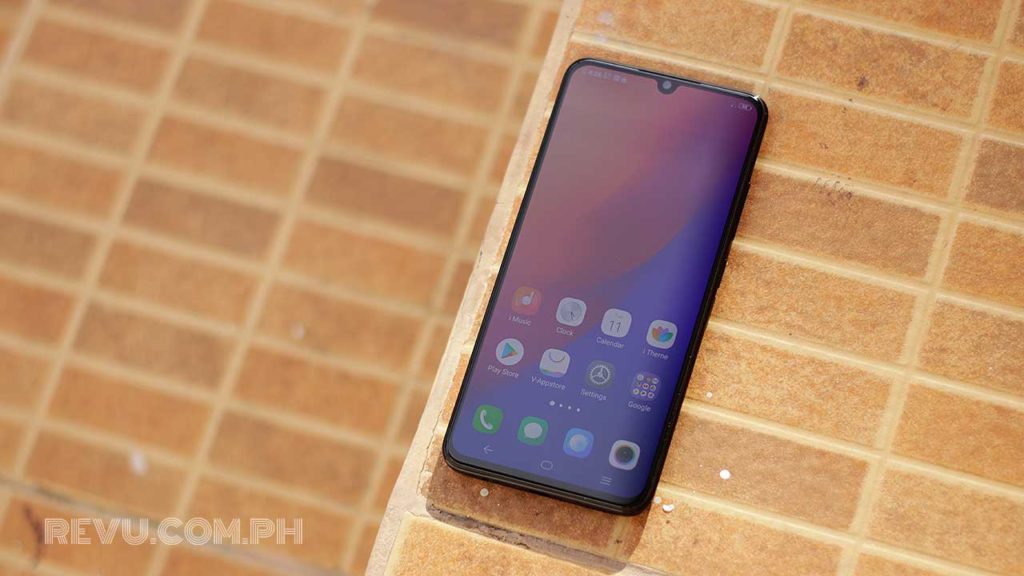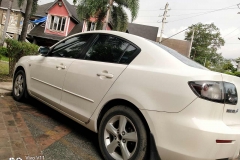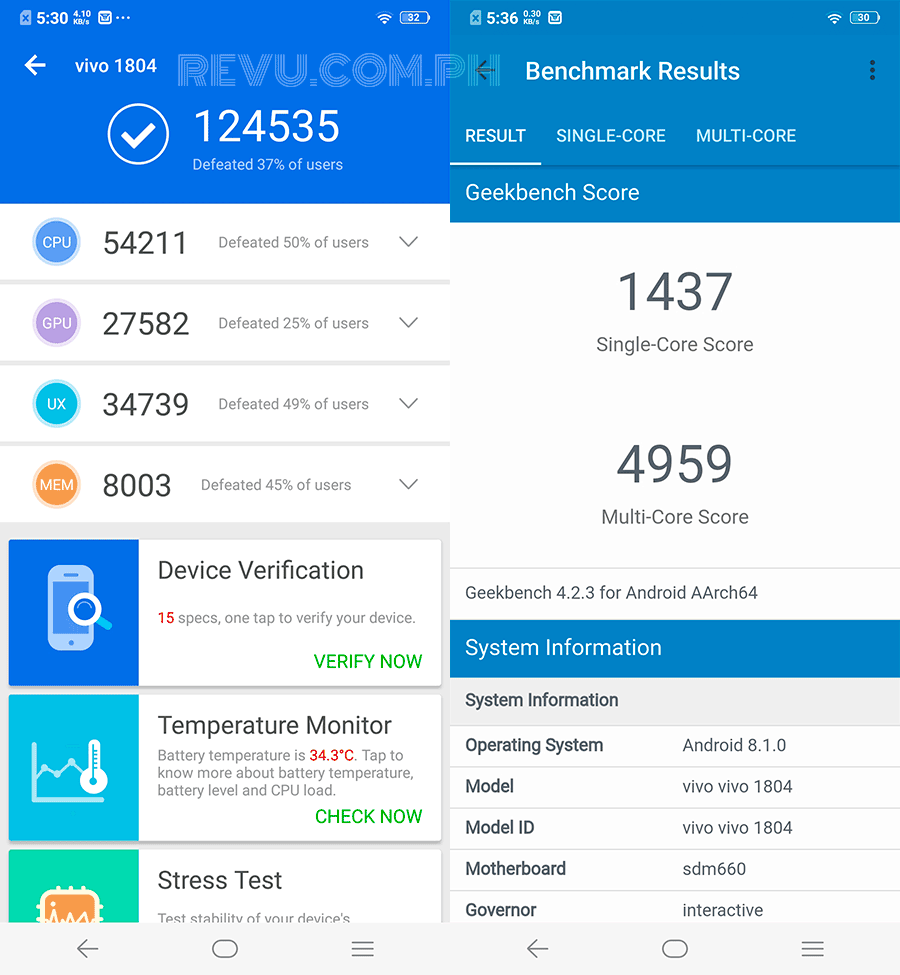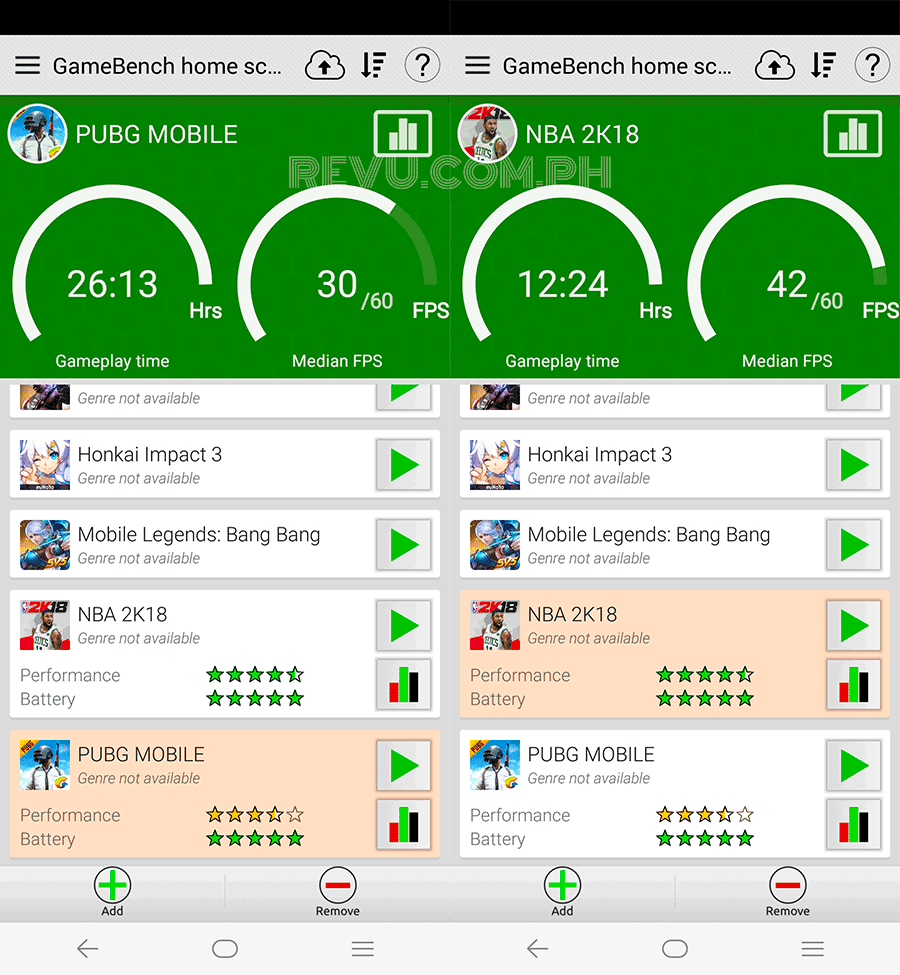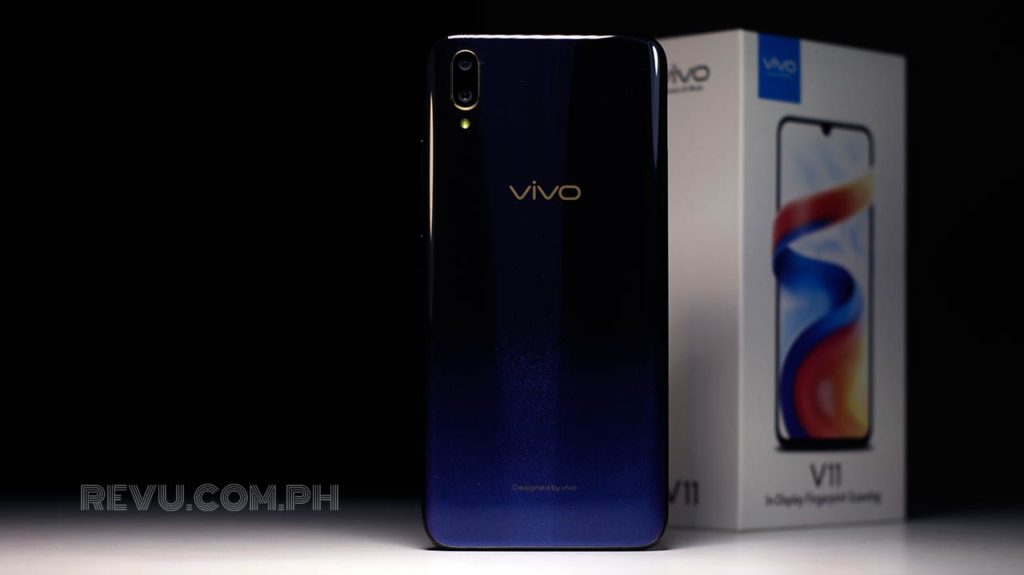Vivo has been at the forefront of developing in-display solutions for use in its smartphones. It broke ground with the Vivo X20 Plus UD, the world’s first-ever phone to ship with a fingerprint sensor built into the screen, beating the likes of Apple and Samsung to integrating the technology into a consumer product in the process.
The Chinese brand followed up by releasing the Vivo X21 and NEX flagship to international markets, in that order, though none of the company’s offerings so far combined an in-screen scanner with a reasonable price tag. Then the Vivo V11 (also known as the Vivo V11 Pro in India) gets announced in the Philippines days ago and changes the paradigm by which the company operates.
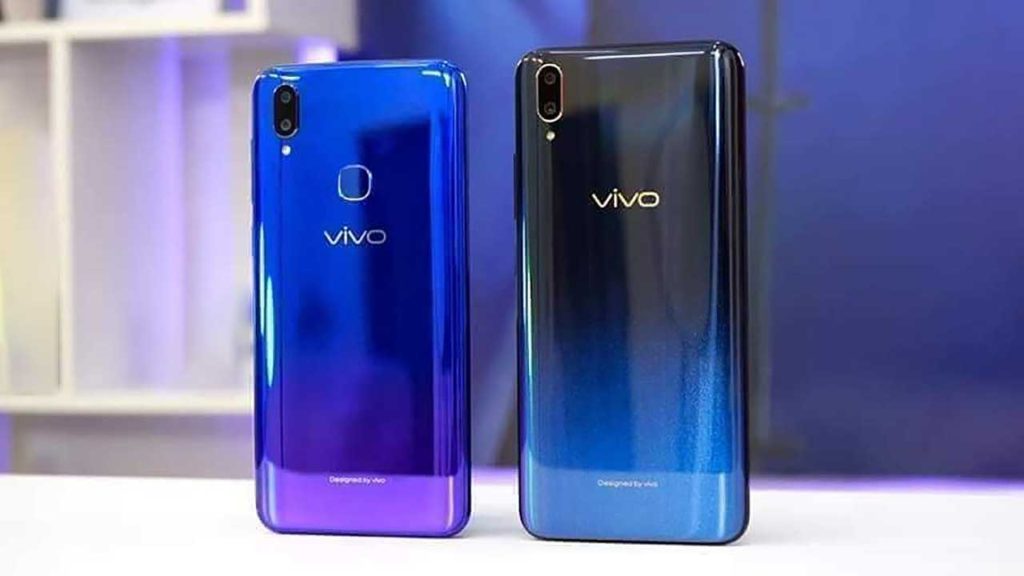
The Vivo V11 (right) was launched in the Philippines along with the Vivo V11i (left). To know more about the latter, read Vivo V11i, a cheaper V11, launched in the Philippines.
Technical innovations become more affordable with time, and it seems that Vivo has found a way to incorporate an in-display fingerprint sensor into its midrange V series without jacking up the cost considerably. Its headline feature aside, though, the Vivo V11 does a lot of things right, vastly outdoing its predecessor in almost every facet, crucially in terms of speed and graphics performance and image quality.
And while it costs P2,000 (around $37) more than the Vivo V9 at launch, with the V11 being listed at P19,999 ($371) in the Philippines, the extra money gets you the best-value phone Vivo has made in a while. It’s one of the best purchases you can make if your budget only goes up to a particular range.
Hardware
On the outside, the Vivo V11 looks nearly identical to the X21, except a tad taller, because the screen is bigger and packs more vertical pixels, resulting in a higher aspect ratio (now 19.5:9). The back of the phone, like so many other Vivo devices before it, continues the company’s familiar pattern of styling with aggressive, symmetrical curves that taper both ways toward the plastic frame.
The back panel is supposedly made of glass, though we don’t know which company made it and if there’s anything else in particular that bears mentioning here. We do know that it will pick up micro scratches in everyday usage, so using the supplied case is highly encouraged from day one.
The Vivo V11 Starry Night edition has a glittery, blue-ish purple top coat in the lower third of the panel.
Another thing that particularly stands out is the finish. In a first for a Vivo phone announced in the Philippines, the V11 gets gradient coloring on the back. Not only that, the Starry Night edition has a glittery, blue-ish purple top coat in the lower third of the panel.
The effect, which can change depending on the light and angle, doesn’t look overdone, though. In fact, it’s subtle enough that it doesn’t translate strongly in many of our photos. We like it like that, and we seriously hope there’s more of the same from the company.
The back also features a dual-lens setup with gold trim details on the lens cover to match the color of the Vivo branding. It’s a simple yet appreciated reminder that the attention to detail here is on another level, as compared to most other phones in the segment.
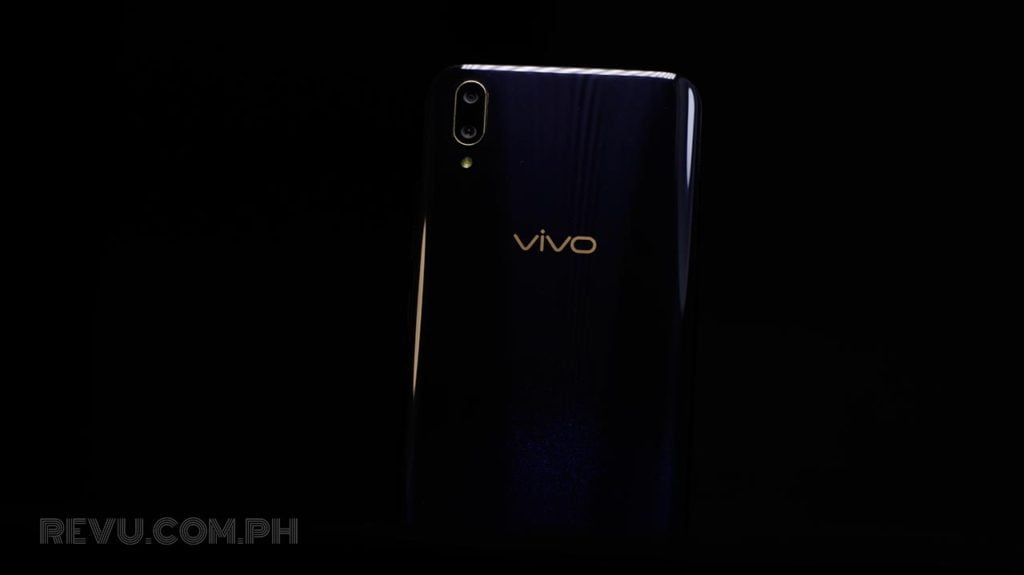
A simple yet appreciated reminder that the attention to detail here is on another level: The Vivo V11’s back features a dual-lens setup with gold trim details on the lens cover to match the color of the Vivo branding.
The usability is good, too, partly because of the curved glass which is especially comfortable to hold; the smaller bezels and notch at the top; and the impressive screen-to-body ratio that is said to be as high as 91 percent. It certainly helps that there is no physical fingerprint reader anywhere on the Vivo V11’s casing.
All the buttons are clicky and in one place — the right-hand side, where your thumb would normally rest if you’re holding the phone in portrait orientation. The right cheek houses the dual nano-SIM and dedicated microSD card trays. The microUSB port for charging and file transfer, as well as the headphone jack and mono speaker, are located at the base.
While some may be disappointed to find a legacy connector on a midrange device in 2018, Vivo has added fast charging for shorter top-ups using the bundled 18-watt charger.
Of course, the biggest attraction here is the V11’s in-display fingerprint scanner. A brief explainer on how it works: A tiny portion of the display brightens up to bounce off light from your finger’s surface to the optical sensor underneath the panel. The reflected light carries your fingerprint information to the sensor, which then matches it with data stored in the phone’s system. If a match is found, the phone unlocks.
Vivo is at the forefront of under-display fingerprint-sensor technology
The authentication and verification process happens almost instantly, without the user knowing about it. Yet despite the speed of unlocking and improvements Vivo has put into the system over time, it’s still comparatively slower than using a conventional fingerprint reader.
Thankfully, accuracy isn’t a problem with the Vivo V11, as our unit is able to correctly identify our fingerprints most of the time. One minor concern is that the optical sensor isn’t designed to work well with glass screen protectors. The phone does come with a plastic film installed, for protection against scratches and scuffs, so you might want to stick with it for a while.
Face unlock is available as an alternative via the front-facing camera. It won’t override fingerprint authentication unless you press the wake or power button.
Screen
The screen on the Vivo V11 officially comes in at 6.41 inches diagonally, with a resolution of 2,340 x 1,080 for an aspect ratio of 19.5:9 and a pixel density of 402 dots per inch. It uses OLED technology, which is also a prerequisite for incorporating a fingerprint scanner into a smartphone display.
OLED also means the screen can get plenty bright, which helps with outdoor visibility. Using its max brightness setting, we had absolutely zero problems interacting with the display in direct sunlight.
Colors look bolder and more vivid, too, while black levels are much improved if you’re coming from a regular LCD. The overall quality is great for consuming all kinds of content and definitely superior to most smartphone displays in this price range.
The Vivo V11 doesn’t sport an LED notification light — at least none that we’re aware of. But it does have always-on functionality, which persistently shows the date, time, battery level, and any notifications that might have come in on the screen without draining the battery to alarming levels. A portion of the panel will also light up to indicate when the phone is charging.
Cameras
On the imaging side, the V11 features two cameras around the back, plus a single solution for clicking selfies. Similar to the X21, the 12-megapixel primary camera uses dual-pixel technology, which allows the camera to focus faster, even in low light. It adds a secondary camera to help in taking portrait shots, whereas the f/1.8 aperture lens makes a difference in dimmer environments.
[sciba leftsrc=”https://www.revu.com.ph/wp-content/uploads/2018/09/Vivo-V11-sample-picture-auto-mode-review-price-specs-Revu-Philippines-c.jpg” leftlabel=”Auto mode” rightsrc=”https://www.revu.com.ph/wp-content/uploads/2018/09/Vivo-V11-sample-picture-portrait-mode-bokeh-effect-review-price-specs-Revu-Philippines-c.jpg” rightlabel=”Portrait mode” mode=”horizontal” width=””]Set 1 of pictures taken with the Vivo V11: Auto mode vs Portrait mode (with bokeh effect)
[sciba leftsrc=”https://www.revu.com.ph/wp-content/uploads/2018/09/Vivo-V11-sample-picture-auto-mode-review-price-specs-Revu-Philippines-e.jpg” leftlabel=”Auto mode” rightsrc=”https://www.revu.com.ph/wp-content/uploads/2018/09/Vivo-V11-sample-picture-portrait-mode-bokeh-effect-review-price-specs-Revu-Philippines-e.jpg” rightlabel=”Portrait mode” mode=”horizontal” width=””]Set 2: Auto mode vs Portrait mode (with bokeh effect)
[sciba leftsrc=”https://www.revu.com.ph/wp-content/uploads/2018/09/Vivo-V11-sample-picture-auto-mode-review-price-specs-Revu-Philippines-b.jpg” leftlabel=”Auto mode” rightsrc=”https://www.revu.com.ph/wp-content/uploads/2018/09/Vivo-V11-sample-picture-portrait-mode-bokeh-effect-review-price-specs-Revu-Philippines-b.jpg” rightlabel=”Portrait mode” mode=”horizontal” width=””]Set 3: Auto mode vs Portrait mode (with bokeh effect)
[sciba leftsrc=”https://www.revu.com.ph/wp-content/uploads/2018/09/Vivo-V11-sample-picture-auto-mode-review-price-specs-Revu-Philippines-a.jpg” leftlabel=”Auto mode” rightsrc=”https://www.revu.com.ph/wp-content/uploads/2018/09/Vivo-V11-sample-picture-portrait-mode-bokeh-effect-review-price-specs-Revu-Philippines-a.jpg” rightlabel=”Portrait mode” mode=”horizontal” width=””]Set 4: Auto mode vs Portrait mode (with bokeh effect)
[sciba leftsrc=”https://www.revu.com.ph/wp-content/uploads/2018/09/Vivo-V11-sample-picture-auto-mode-review-price-specs-Revu-Philippines-d.jpg” leftlabel=”Auto mode” rightsrc=”https://www.revu.com.ph/wp-content/uploads/2018/09/Vivo-V11-sample-picture-portrait-mode-bokeh-effect-review-price-specs-Revu-Philippines-d.jpg” rightlabel=”Portrait mode” mode=”horizontal” width=””]Set 5: Auto mode vs Portrait mode (with bokeh effect)
The rear setup performs notably well outdoors in daylight, producing detailed results with good color balance and saturation overall. Importantly, we didn’t notice a steep decline in quality where lighting can be problematic, such as indoors at nighttime. You can see some of the images we took in low-light situations in the gallery below. Most of them turned out quite nicely.
More sample photos captured on the Vivo V11
The selfie camera sees a single 25-megapixel sensor behind an f/2.0 lens. It takes tack-sharp images using the default option. When shooting selfies in Portrait mode, you can toggle between different lighting options.
There’s also AI Face Beauty mode, which lets you enhance only the facial features you want. There are artificial-intelligence features that make for a better point-and-shoot experience by tweaking the camera settings automatically as you snap away. There are AR stickers to mess around with, too.
Video recording in the default setting maxes out at 4K resolution, something only available in a select number of devices at this price point. You can even shoot slo-mo footage using the main camera.
Performance
Upgrading from the Qualcomm Snapdragon 626 inside the V9, Vivo has outfitted the V11 with a Snapdragon 660. The chip features eight high-performance CPU cores alongside 6GB RAM and Adreno 512 graphics. In synthetic tests, the Snapdragon 660 is said to be up to 30 percent faster in graphics processing than older generations.
Potential performance aside, the V11 is indeed capable of breezing through most apps and games you’ll throw at it in real life. Graphics-intensive titles, in particular, run fairly smoothly on our unit. Even those that are demanding for mobile devices, such as PUBG Mobile and NBA 2K18, are playable at higher detail and frame-rate settings. In fact, PUBG Mobile runs at a stable 30 frames per second on the HD graphics setting, according to the GameBench benchmark tool.
Gaming on the Vivo V11: PUBG Mobile and NBA 2K18 (7:04 mark)
We’ve used the Vivo V11 as a daily driver for the past couple of weeks. During the period, we found the phone to be snappy and responsive to touch. Small tweaks to the animations make the interface that much smoother, and the overall usage experience is impressively pleasant. The latest version of Funtouch OS based on Android 8.1 Oreo is installed out of the box, along with Vivo’s own Jovi voice assistant and a bunch of standard Google apps.
Battery life and charging
Many phones at this price come with a sizable battery, and the Vivo V11 is par for the course. The 3,400mah cell can stretch the battery life of our unit to a day and a half before reaching for the wall plug — or a full day with heavier use that involves long gaming sessions.
As we mentioned earlier, fast charging, as well as the hardware needed to use it, is included in the retail package. And while plenty of other devices share this trait with the V11, even by the current standards of fast charging, this thing tops up from zero to full in a surprisingly short amount of time, all thanks to Vivo’s new Dual-Engine fast charging.
Vivo’s new Dual-Engine fast charging was able to charge our V11 unit from dead to enough power for the day (or 60-percent battery capacity) in 40 minutes, and to 100 percent in 90 minutes.
In our tests, it was able to charge our unit from dead to enough power for the day (or 60-percent battery capacity) in 40 minutes, and to 100 percent in 90 minutes. Equally importantly, neither the phone nor charger would get excessively hot during charging.
Final thoughts
Sometimes, excellence doesn’t come cheap. And truth be told, the Vivo V11 is indeed an excellent option for those who don’t care so much about speedy graphics, or squeezing the best performance possible from an Android phone under P20,000 ($370), but consider the whole greater than the sum of its parts.
The V11 is pleasing to hold and use and view content on, with Vivo taking the advantages of OLED and bringing them to a 6.4-inch size. General performance is satisfyingly good, about as good as it gets in the category, minus one or two outliers. Its battery life is also strong enough that you can get two days of light to moderate use from a single charge, and Dual-Engine fast charging tops the phone up in an hour and a half.
Of all the smartphones Vivo announced in 2018, this is the one we’re most excited about.
Vivo V11 specs
- 6.4-inch OLED display, 2,340 x 1,080 resolution (19.5:9)
- Octa-core Qualcomm Snapdragon 660 processor
- 6GB RAM
- 64GB expandable memory (up to 256GB microSD card)
- Dual 12- and 5-megapixel rear cameras with LED flash
- 25-megapixel front camera
- Fingerprint sensor (in-display)
- 3,400mAh battery with Dual-Engine fast charging
- Android 8.1 Oreo
Share this Post


